By the time I arrived in Aswan in January 2011, I was exhausted. My week in Cairo had left me jumpy and with a bad case of ‘Mummy Tummy.’ I obviously didn’t know it at the time, but the Tahir Square protest would happen in less than two weeks and talk of revolution was already in the air. Looking back, I’m not sure if I was perceptive enough to pick up on the strains of unrest in Cairo, but arriving in sunny Aswan was just the change I needed.
Contents
Aswan
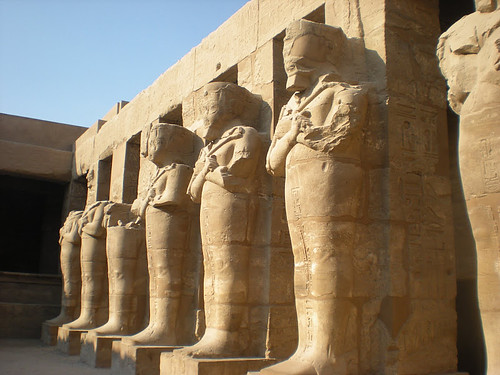
I was scheduled to start a four day/three night cruise up the Nile River from the city of Aswan up to Luxor on one of the many large river boats. I had arranged to spend an extra night in Aswan before the cruise started, so I was able to spend the day exploring the city rather than rushing to board the ship. Aswan sits at the top of the Lake Nasser and is home of the famous Aswan Dam that separates the lake from the rest of the Nile River. The dam was put in place to help regulate the natural Nile flooding patterns and as a way to generate electricity. Standing on the dam itself provided a great view of the lake and surrounding Nile River banks.
Also located in Aswan, the Unfinished Obelisk was one of the most interesting things I was able to visit while in Egypt. Because the Pyramids and other Ancient Egyptian monuments are so impressive, it was sometimes hard for me to remember that they were constructed so many thousands of years ago without electricity or modern building techniques. The Unfinished Obelisk is (as you may have guessed from its name) unfinished – still in the midst of construction. It still lies frozen in time partially cut out in the ancient stone quarry. Although if it had been completed it would have been the largest Obelisk in Egypt, cracks in the stone forced the Ancient Egyptians to abandon it prior to completion, allowing modern visitors a rare glimpse at how these huge monuments were created.
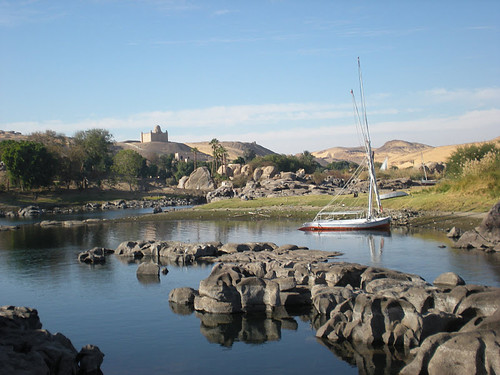
The final activity of the afternoon was a short journey down the Nile on a small sail boat to see a Sudanese Village. Although the village itself was a total tourist trap, the boat ride was amazing. In my opinion, everything we had seen that day was easily overshadowed by the beauty of the Nile River itself.
Abu Simbel
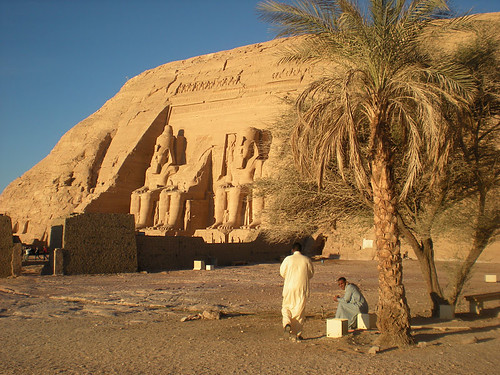
The next morning, as part of the 3am police escort, I set off to see the famous temple of Abu Simbel near the Sudanese border. Because of security concerns, it’s impossible to make the trip outside of the daily organized caravans. Although the temple was 3 hours away by car, seeing the massive temple was well worth the trip. Abu Simbel, a UNESCO world heritage site, actually had to be relocated due to flooding from the Aswan Dam. The temple served as a tomb for Ramsses II and was carefully constructed so that on two days of the year light will penetrate the otherwise dark corridors and illuminate the back sanctuary. During the relocation, archeologists had to take special care to make sure the tombs were correctly positioned for this natural light show wouldn’t be lost.
That night I boarded the cruise ship and set off up the Nile towards Luxor. There were two scheduled stops before reaching Luxor at the sites of famous Ancient Temples.
Kom Ombo
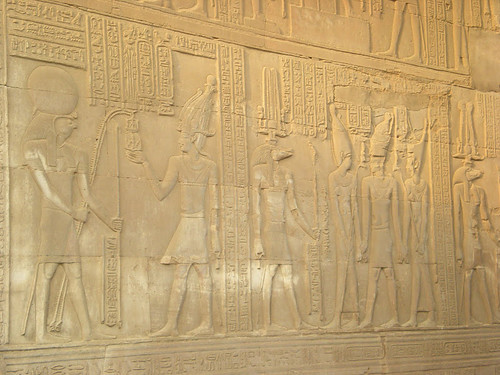
The first stop was early the next day at the Temple of Kom Ombo. Kom Ombo is actually two temples, one dedicated to the Egyptian Crocodile God, Sobek and the other to the Falcon God, Horus. The two sides of the temples are built almost identically as to honor both of these important deities.
Edfu
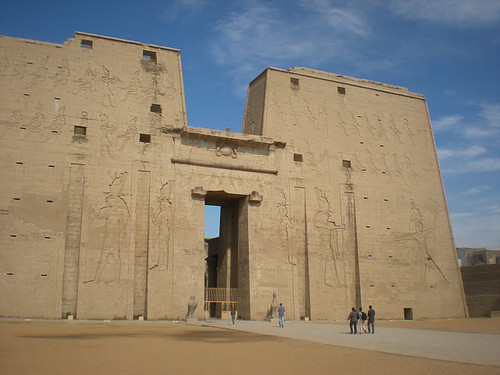
Our next stop was at the city of Edfu further up the Nile River. The Temple at Edfu is also dedicated to the Falcon God, Horus. It was interesting to see many of the wall carvings I had learned about during my tour of Kom Ombo repeated in this temple. The depiction of Horus with a human body and a falcon head made him easy to pick out in many of the carved murals. Compared to Kom Ombo, Edfu seemed much better preserved and impressive. Unfortunately, Edfu did have several examples of obvious vandalism from throughout the years. Most of the damage is due to people looting items while other damage is the result of people attempting to destroy the religious symbols because of their pagan nature. Inside the sanctuary of Edfu you can see blackened ceilings from fires set inside the temple. You can also see where sections of carvings have been chipped away or smashed.
Luxor
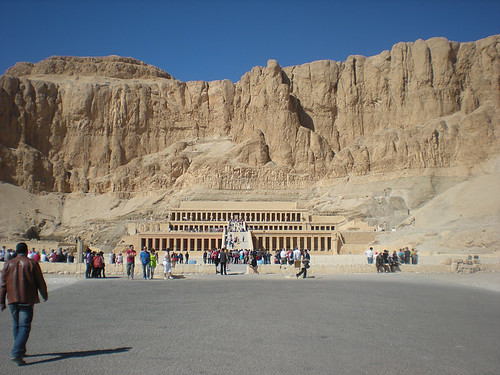
The final destination on my trip up the Nile was the ancient capital city of Thebes, Luxor. Home to what has got to be a record number of monuments, temples, and tombs it was amazing to drive around and see the sheer number of ancient columns and statues mixed in among the modern hotels and souvenir stands. Luxor is divided into the East Bank, home of the Luxor Temple and the West Bank, where the Valley of the Kings is located.
My two favorite sites in Luxor where the Temple of Hatshepsut and the Valley of the Kings – both on the West Bank. Although filled with crowds on the day I visited, the Temple of Hatshepsut was amazing to see – sprawled out against a mountain backdrop at the end of a large expanse of dessert. Because of both its stunning location and impressive size, it was in my opinion the most visually stunning temples in Egypt. The style is also very different from the somewhat similar looking temples of the past few days.
The Valley of the Kings is a must see for anyone coming to Egypt. The area served as a burial complex for much of the royalty of Ancient Egypt – in a much less obvious way than the somewhat indiscrete great Pyramids. Because many of the contents of these other famous burial sites were lost to looters long ago, the tombs in the Valley of the Kings contains some of the best examples of tomb decoration and sarcophaguses.
As it turns out cruising is not my favorite way of touring a country, but ultimately this trip allowed me to see some of the famous and most impressive artifacts in the world. Memories of standing in the shadows as Abu Simbel loomed over me or studying the paintings on the tomb walls in the Valley of the Kings are ones I’ll keep with me forever.
Liz is a 20 something year old living in Washington, DC and trying to see the world one country at a time. Right now she is only a part time traveler since she is still aa full time “try and and make the rent”-er. Check out her blog L’appel du Vide or follow her on twitter.
